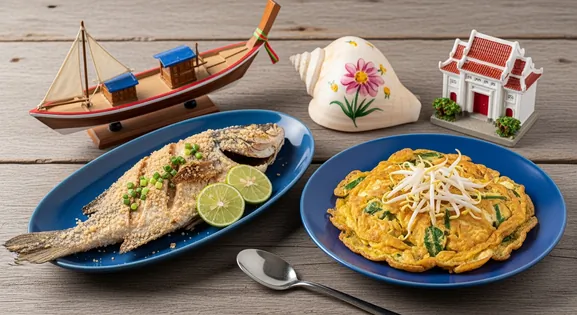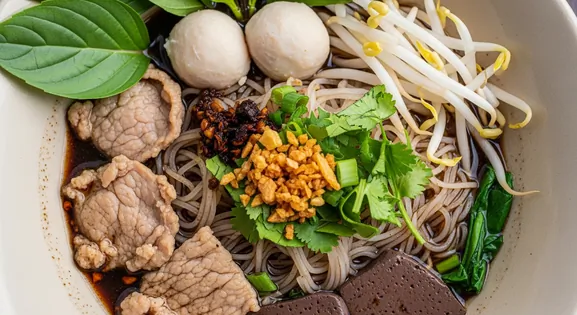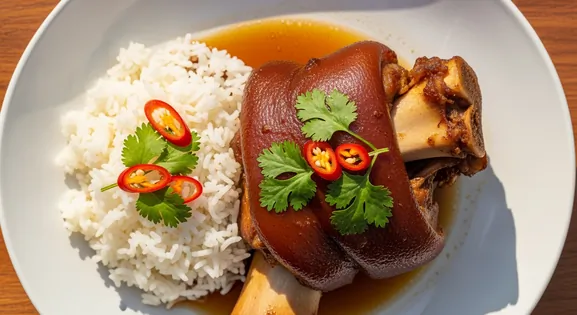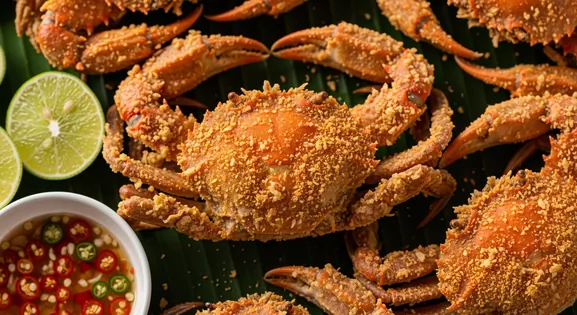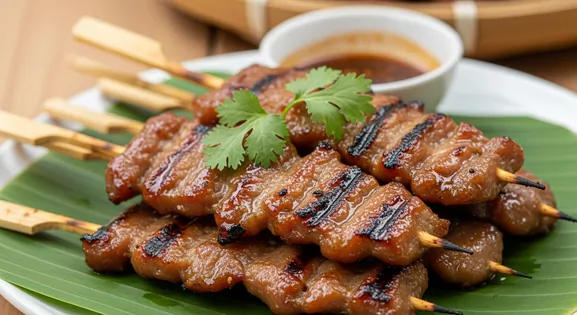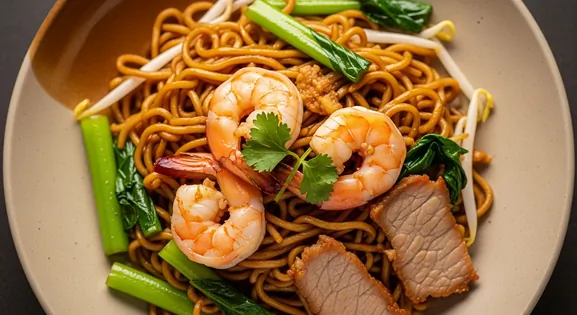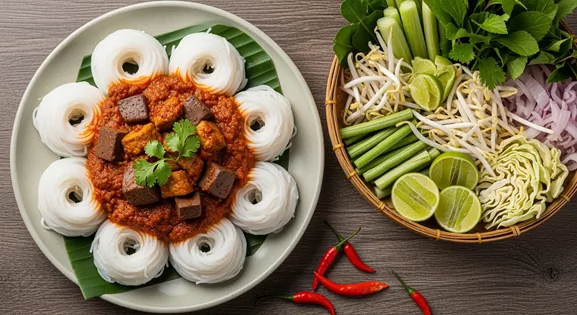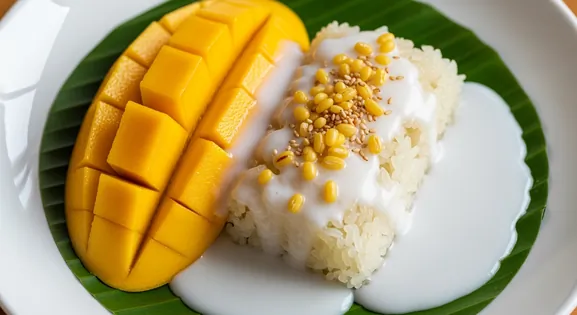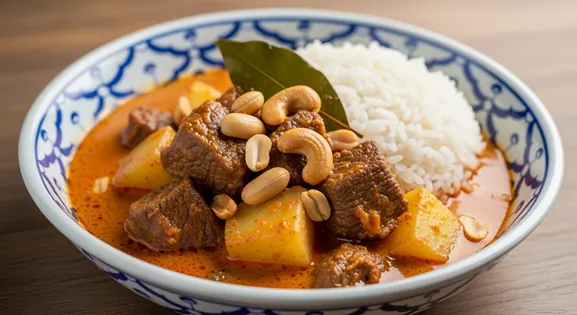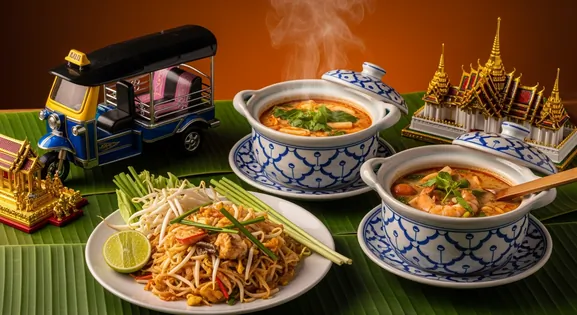
Bangkok
Discover Bangkok's best street food areas including Yaowarat, Or Tor Kor Market & Sukhumvit 38. Expert quality guidance, peak hours & must-try Thai dishes.
Thai cuisine is a vibrant tapestry of flavors, where the interplay of sweet, sour, salty, spicy, and bitter creates a harmonious balance. From the bustling street stalls of Bangkok to the serene culinary traditions of the north, every dish tells a story of regional diversity and fresh ingredients. This guide empowers you to explore Thailand's rich food culture, offering insights into its authentic practices and how to savor its delights like a local.
At the heart of Thai food culture is the communal dining experience, where multiple dishes are shared, allowing for a symphony of tastes and textures in every meal. Rice, particularly jasmine rice, serves as the neutral foundation, complementing the intense flavors of curries, stir-fries, and salads. The "kruang prung," a ubiquitous condiment caddy found on every table, exemplifies the Thai philosophy of personalization, inviting diners to fine-tune their dishes with sugar, chili, fish sauce, and vinegar to achieve their desired balance. This emphasis on individual preference extends to regional variations, from the fiery, herbaceous dishes of the Isan northeast, influenced by Lao cuisine, to the milder, coconut-rich curries of the south. Thai food is deeply intertwined with daily life, reflecting a profound connection to fresh, local ingredients and a culinary heritage passed down through generations, making every meal an authentic cultural immersion.
June, July, August, September, October
Areas like Bangkok's Boat Noodle Alley near Victory Monument thrive during this season, offering steaming, flavorful bowls in a dry, covered setting.
During the monsoon, observe seafood vendors for high turnover and vibrant appearance to ensure optimal quality.
March, April, May
In extreme heat, notice how vendors manage perishable ingredients, prioritizing those with visible refrigeration or high turnover.
Dishes prepared fresh in front of you are ideal, as ingredients are exposed to heat for minimal time before consumption.
Thai food is served for you to personalize. Use the caddy with sugar, dried chili, fish sauce with chili, and vinegar with chili to adjust your noodle soup or dish to achieve your perfect balance of sweet, spicy, salty, and sour.
Thai spicy is often far hotter than Western standards. To manage heat, order "mai phet" (not spicy) or "phet nit noi" (a little spicy). Be aware that even "a little spicy" can be quite potent for the uninitiated.
The best street food often comes from vendors who make only one or two dishes. This specialization means they have perfected their recipe over years or even generations. A simple-looking cart can be a local culinary legend.
Expert tips for enjoying Thailand's vibrant night markets with confidence and making quality-focused choices
How to effectively communicate dietary preferences and restrictions to Thai vendors for a smooth dining experience
Must-try Thai street foods include Pad Thai (stir-fried noodles), Som Tam (green papaya salad), Mango Sticky Rice, Boat Noodles, Khao Pad (fried rice), grilled satay skewers, and various curries served with rice. Bangkok's Chinatown and Chatuchak Weekend Market offer exceptional street food experiences.
Making informed choices about street food in Thailand involves observing vendors with high customer turnover, ensuring dishes are cooked to order, and noting clean preparation areas. Millions of travelers enjoy Thai street food annually by applying these smart eating tips.
"Jay" (เจ) refers to a specific type of vegetarian and often vegan diet, particularly common during the annual Vegetarian Festival. Jay food avoids meat, poultry, seafood, and often pungent vegetables like garlic and onion, as well as certain strong spices. Look for yellow flags with red Thai script indicating "Jay" restaurants or stalls.
Thai cuisine is famously spicy, but spice levels can be adjusted. Learn the phrase 'mai pet' (not spicy) or show vendors by holding up fingers (one for mild, two for medium, etc.). Many vendors are accustomed to adjusting spice levels for tourists.
Discover Bangkok's best street food areas including Yaowarat, Or Tor Kor Market & Sukhumvit 38. Expert quality guidance, peak hours & must-try Thai dishes.
Discover Phuket's best street food areas including Rawai Seafood Market, Phuket Old Town & Naka Night Market. Expert quality tips, peak hours & must-try southern Thai dishes.
Small bowls of rice noodles in rich blood-thickened broth.
Pork leg slow-braised in five-spice soy sauce until tender.
Battered deep-fried whole molted crabs with dipping sauce.
Marinated pork skewers grilled until caramelized over charcoal.
Thick yellow egg noodles stir-fried in dark soy sauce.
Fermented rice noodles served with curry and fresh vegetables.
Sweet coconut sticky rice paired with ripe mango slices.
Rich coconut curry with meat, potatoes, peanuts, aromatic spices.
At Tasteplorers, our mission is to provide the most accurate and useful travel information in the world. To achieve this, all content on this site is created through our unique editorial framework. We utilize leading AI research tools, guided by our proprietary prompts, and a multi-stage validation process. This entire system is overseen by our editorial team to ensure everything we publish meets our high standards for accuracy, cultural nuance, and practical value for travelers.
Learn more about our Editorial Process and our Mission.
Discover Europe's diverse culinary landscape, from Mediterranean flavors to hearty Alpine fare. Learn to navigate markets, decode menus, and eat like a local.
Discover the vibrant cuisines of Latin America & the Caribbean. Our expert guide covers everything from Mexican street food to Peruvian ceviche and market tips.
Explore Oceania's diverse food scene. Learn about Polynesian earth ovens, Fijian feasts, and the vibrant café culture of Australia and New Zealand.
Explore Southeast Asia's diverse food cultures from Thailand to Vietnam. Get expert tips on navigating spice levels, choosing quality vendors, and understanding the rich traditions of the region.
